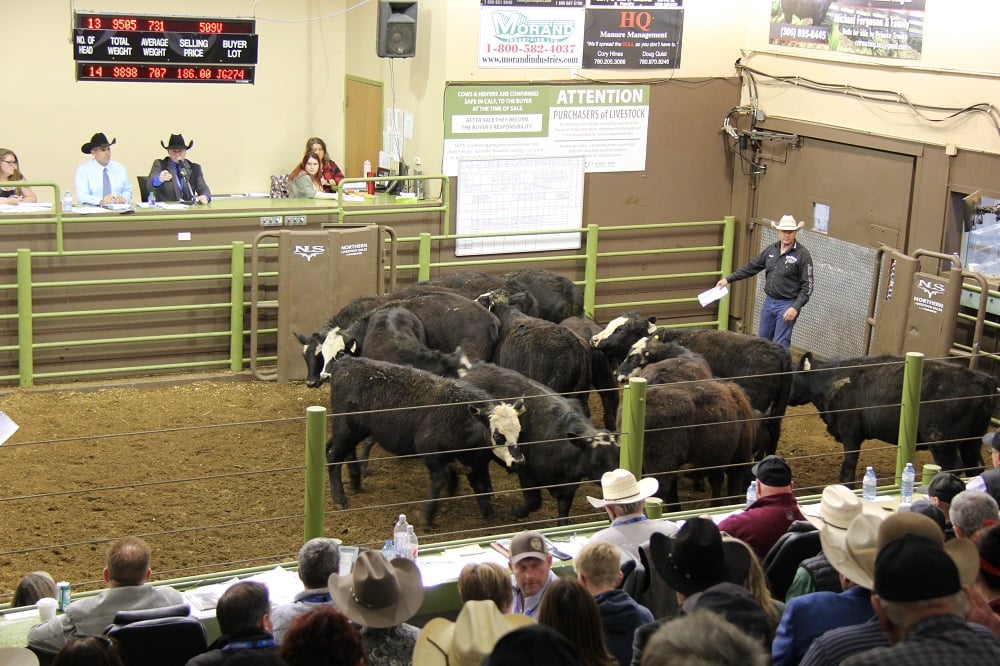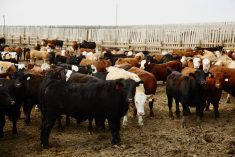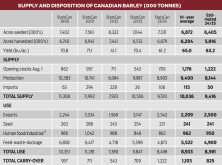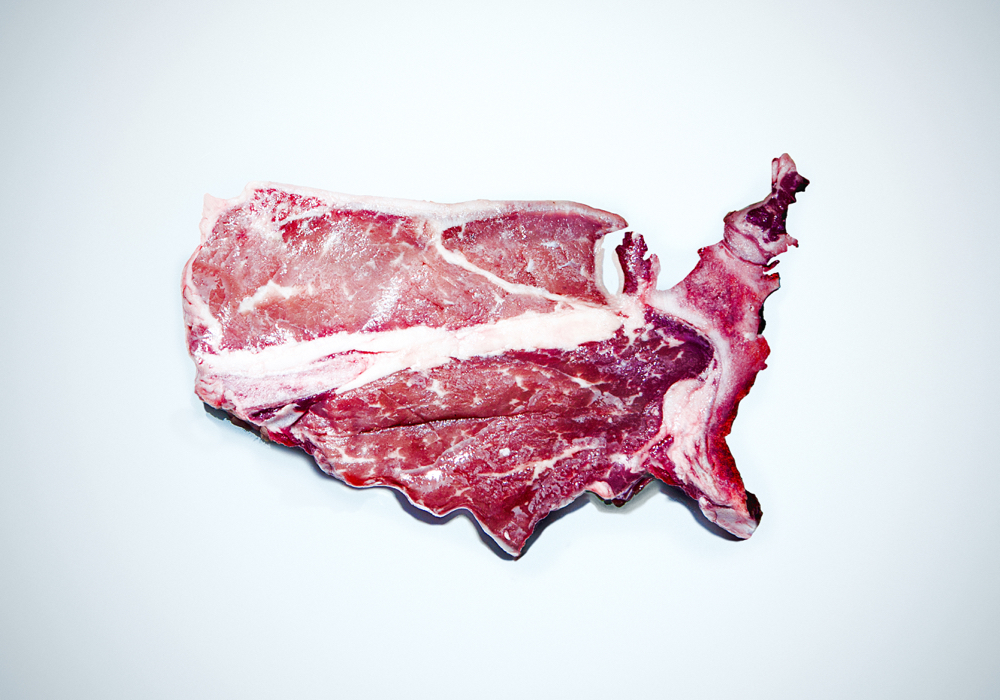Fed Cattle
The fed-cattle cash market held near steady at record levels during the past four weeks. The current average fed-steer price in Alberta was $145.65/cwt, $31.79/cwt higher than the same week in 2013. Feedlots are up to date with their marketings, steer carcass weights are more than 30 pounds below year-ago levels and demand for the cattle is coming from both sides of the border. The fed basis has been wide since the start of 2014 and while it has narrowed the cash to futures basis -19/cwt compared to the five-year average of -9/cwt for the same period.
Read Also
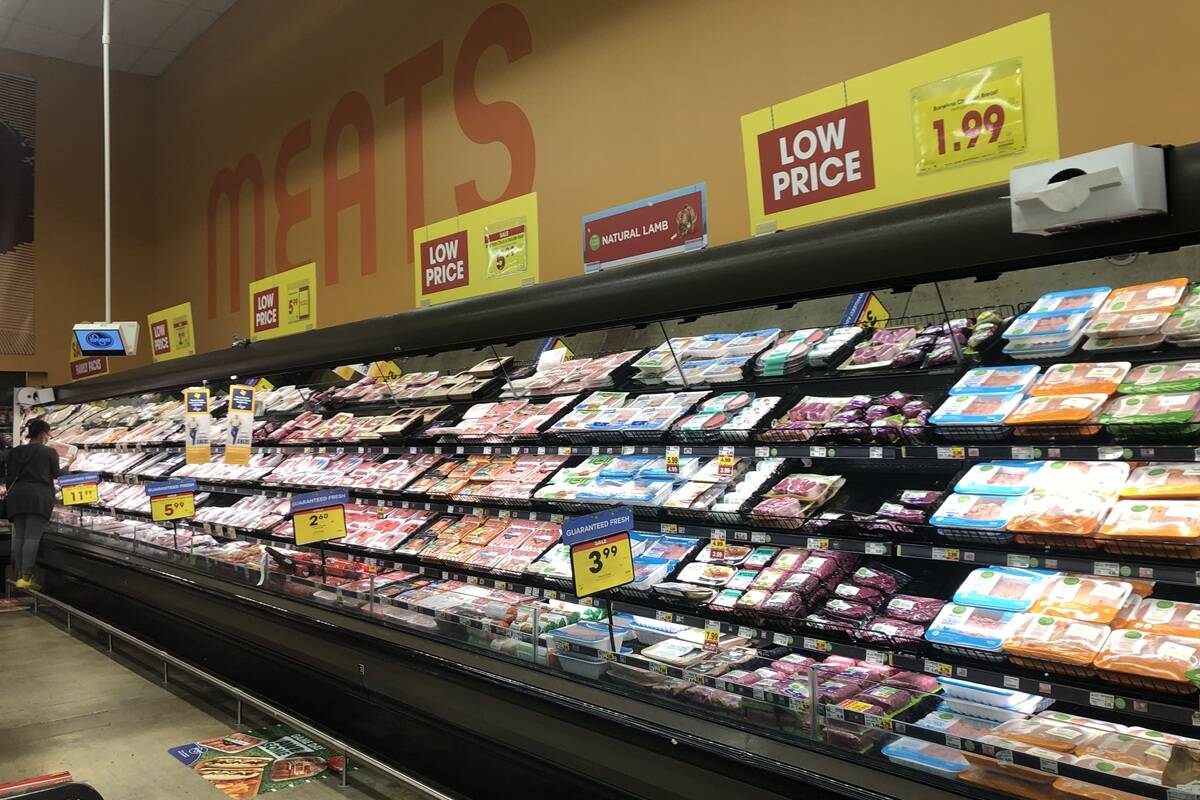
U.S beef industry faces demand risks and disease dangers
High beef prices and New World screwworm threaten beef demand and cattle health in the U.S.
The April 1 Alberta and Saskatchewan cattle-on-feed report stands at 984,112 head, eight per cent more than last year but down from the March 1 total. This was a result of aggressive marketings into the strong fed market plus a drop in the number of cattle placed on feed. Placements were down nine per cent in March at 160,288 head. Looking to cash in on record prices domestic steer slaughter to date has been pushed up by five per cent to 377,641 head at press time and heifer slaughter has increased 15 per cent to 256,667 head. Heifer slaughter numbers increased significantly in the past few weeks. Tight fed supplies south of the border and a weaker dollar resulted in exports just slightly ahead of last year’s pace at 119,153 head.
Feeder Cattle
Feeder cattle volumes were larger through the first quarter of the year as many producers eagerly sold into the strong market. Some cattle purchased in the fall were marketed earlier than scheduled as well to take advantage of the already good profit margin. In recent weeks feeder cattle supplies have started to decrease seasonally while demand remains strong pushing prices higher. Lightweight calves have continued to increase aggressively in past weeks as buyers spurred on by the warmer weather attempted to fill their grass cattle needs. Five hundred and fifty-weight steers in mid-April averaged $217.38/cwt which is $65/cwt or $358/head higher than the same time last year. Heavy feeder cattle chalked up steady increases as well, with 850-pound steers edging over $172/cwt which puts them $51/cwt or $434/head ahead of a year ago. Although feeder cattle prices in Canada have been very strong through the first four months of 2014 the basis continues to disappoint resulting in the Canadian feeder market trading significantly under the U.S. since the start of the year. While we have seen great prices it’s hard not to overlook the opportunity lost through the basis. The current 850-pound steer basis is -25.50/cwt compared to the latest five-year average of -15/cwt. This wide basis plus the lower Canadian dollar and tight supplies has resulted in a steady stream of cattle moving to the U.S., 144,812 head since the start of the year which is 62 per cent more than last year at the same time.
Non-Fed Cattle
Non-fed cattle prices continue to outpace expectations and break previous records. D1,2 cow prices reached an average high $105.42/cwt the first week of April. Since then prices have slipped back slightly to average $103.88/cwt in mid-April which was a 30 per cent improvement or $24/cwt higher than the same week in 2013. Smaller available cow numbers will keep U.S. buyers in the Canadian market. The COOL rules do not apply to grinding meats, however D1,2 cows still have seen a wider basis than historical trends would have suggested. Nonetheless the number of cows exported for slaughter to date in 2014 is steady with last year at 86,648 head. Domestic cow slaughter is three per cent lower with a total kill to date of 138,602 head. Butcher bull prices are also higher with a mid-April average of $106.56/cwt. Bull exports are up 12 per cent at 18,916 head while domestic slaughter is up 17 per cent at 859 head.
Debbie McMillin is a market analyst who ranches at Hanna, Alta.




